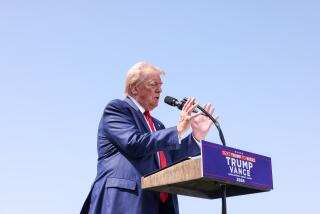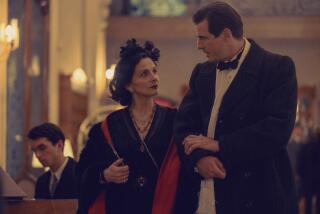Designer Firms Take Aim at Counterfeits
- Share via
PARIS — A small museum in a Paris trademark association houses what appear to be masterpieces of chic French designers--a bottle of Chanel No. 5 perfume, a Hermes scarf, a Louis Vuitton suitcase. They are all fakes.
The world is awash in phony Cartier watches, Christian Dior swim suits and Balmain sweaters. To save their profits and the prestige of their trademarks, 15 French and Italian creators have formed the Committee to Fight Counterfeiters.
The group swung into action a year ago, although it disclosed its existence only last week.
The firms share information and coordinate pleas for anti-counterfeit laws. The decision to band together was triggered by the 1980 discovery of a Milan, Italy, factory grinding out more than 3,000 fake Vuitton, Dior and Celine items daily.
Counterfeiting Big Business
“Counterfeiting has become big business, a world industry,” says the committee. “It could account for 2% of world trade.”
Notable names on the committee are Louis Vuitton, Gucci, Valentino, Camerino, Fendi, Cartier, Celine, Christian Dior, Chanel, Balmain, Hermes and Nina Ricci.
Dior pays 100 employees internationally to track down counterfeit merchandise bearing its famous trademark--from a Cristian (without the H) Dior shop in Bogota to “Dior” wine and jeans, products the house does not make.
Two million fake Cartier watches are sold each year. The chic jeweler Van Cleef & Arpels found its name used in Brazil, Portugal and Japan for shoes, umbrellas and dog perfume.
“More than 40% of shoes, handbags and scarves exported from Italy with the Gucci label are fakes,” says Roberto Gucci, vice president of the firm.
Vuitton’s Sad Tale
Vuitton, creator of handbags and luggage that are a world symbol of chic, has another sad tale.
In 1896, the son of the founder, Georges Vuitton, decided to fight imitators by using the initials of his father, L-V, on a brown fabric for his creations.
By the 1980s, the house was spending $1.1 million--1% of its production--tracking down the makers of cheap reproductions carried by women from Pittsburgh to Hamburg. In 1981, detectives found an Italian firm with 25 miles of the distinctive initialed cloth.
Enter the committee, headquartered in Paris. For the moment, the committee pursues manufacturers of fakes only in Italy, where the counterattack began in 1984. Italy was chosen because it is such a “serious problem,” says Vuitton lawyer Frederic Brunot.
Members in other countries are urged to chase their own counterfeiters, who are most numerous in Taiwan, Italy and Japan.
More to Read
Sign up for Essential California
The most important California stories and recommendations in your inbox every morning.
You may occasionally receive promotional content from the Los Angeles Times.













